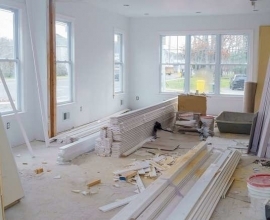Waterproofing Your Basement: External vs Internal
Basement repairs can be tough, and you have to know that not all builders are able to handle the project appropriately. General contractors and builders may have equipment and workers, but not all of them have enough experience in waterproofing basements.
Faulty basements can get dank during spring or during rainy season. A wet basement is really unpleasant. Repairs should be done to lock moisture out of your underground rooms.
Basement waterproofing can be carried out through external or internal repairs. In most cases, it is not the homeowner who will decide what type of repair is needed. The contractor may send an expert to your home to inspect your basement. A renovation plan shall be drafted based on the problems found and your budget. Either external or internal repair can be cumbersome and irksome. For instance, external methods require excavation, which in turn demands use of heavy equipment. Interior methods, on the other hand, can be very messy.
External Basement Waterproofing
The process involves excavation of ground surrounding the house to get access to the exterior walls of the basement. The exterior walls shall be brushed to remove dirt. Thick rubber coating is applied to the wall. Four-inch weeping tiles shall be installed to keep water out. The entire process is laborious and expensive, but it is an effective way to build a protective wall against water and moisture. It is recommended that ground surface slopes away from the house to keep water from running pooling around the house.
Internal Basement Waterproofing
According to general contractors, internal basement is an ineffective way to waterproof basements. However, the main advantages of this method are its lower cost and ease. Work is done on the inside wall, where waterproof membranes are installed. Cracks are repaired and waterproof membranes are installed beneath the flooring. The barriers should block the entry of water and moisture.
Importance of Regular Check
Homeowners are advised to do regular home inspection to check for cracks and leakage. Inspection can be done by walking around the house, looking at walls to see cracks or holes. In the basement, you can check out signs of water seepage. Roots of trees can infiltrate concrete and create cracks on the walls that grow worse with time. Homeowners should call a builder or contracting firm for basement repairs when cracks are first noticed. Early detection means less work is needed, thus less expenditure incurred.
Cracks on the basement and foundation walls are to be fixed right away. In most cases, only through external repair can these cracks and gaps be fixed. Although repairs are quite expensive, they are more recommended as a preventive measure against greater damage caused by leakage of water into your house.
Even if water does not actually seep into your basement, moisture can. This can cause growth of fungi on your basement walls. Fungi (mold and mildew) pose some health risk to your family. A dank basement also causes odor buildup that is just unappealing.
It’s not easy keeping your basement in good repair. Sometimes you just need an expert to lend a hand. Visit https://royalrenovationsottawa.com/! and get professional, helpful advice and learn when you need the professional.
Article Source: http://EzineArticles.com/6820118







